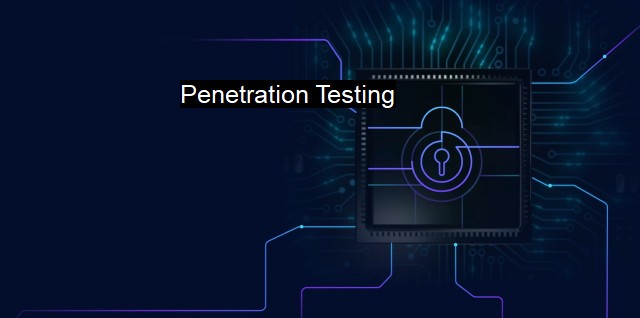What is Penetration Testing?
Securing Your System: Importance and Benefits of Penetration Testing in Modern Cybersecurity
Penetration testing, also known as pen testing or ethical hacking, is a practice in the field of cybersecurity where proficient analysts conduct a simulated attack on a computer system, network, or application, intending to uncover vulnerabilities that could be exploited by hackers or cybercriminals. This process helps recognize exploitable vulnerabilities earlier, before an attacker might be able to discover and exploit them, and reduce potential catastrophic impacts on the system or business processes.Penetration testing is one intricate facet in a cacophony of methods and tactics for establishing better cybersecurity. It mirrors tactics by actors with malicious intent and allows the identification and rectification of weaknesses before actual hackers exploit them. By leveraging the same methodologies as malicious hackers, penetration testers mimic actual, perilous conditions and are able to provide comprehensive reports about IT infrastructure, exposing both potential system flaws and strengths.
Penetration testing uses manual and automated technologies to exploit vulnerabilities. This may include injecting malicious code, escalating privileges, or manipulating data in applications or databases to see how much damage a potential attack can do. It also examines the effectiveness of preventive, detective, and corrective measures in place, such as encryption, firewalls, and intrusion detection or prevention systems.
It’s pertinent to understand that while penetration tests are designed to be non-disruptive, it doesn’t mean they’re free from inherent risk. At times, a penetration test may impact system performance or availability, create data loss or corruption, or cause other harm. For this reason, effective communication, scope planning, and comprehensible processes are fundamental aspects to a successful and inert penetration test.
These tests are commonly segmented into different types according to their broadness and disclosed information. Black box testing is executed without any prior knowledge of the infrastructure to be tested, and as such, has a high tendency to lead to discoveries. Though, this form of testing may fail to uncover all vulnerabilities. White box testing, on the other hand, supplies complete knowledge of the infrastructure to testers which may allow for more comprehensive testing, but isn’t tailored to target undiscovered or unknown vulnerabilities. A hybrid approach called grey box testing comes with limited knowledge of the system and hence provides a balanced and realistic strategy with a more straightforward path to identify vulnerabilities.
Penetration testing can also center on different areas, not necessarily associated with application or system vulnerabilities. These can include phishing attempts, baiting, tailgating, or any other social engineering techniques.
Antivirus is an integral part of the cybersecurity realm directly related to the interception and neutralization of threats that may arise from any vulnerability, detected or undetected. Antivirus programs serve to detect, block and eliminate viruses and malicious malware, hence they represent primary defense systems in a healthy cybersecurity ecology.
The potential downside of antiviruses is that cyber-criminals can carry out penetration testing on their own and find vulnerabilities of these antivirus systems, creating a loophole to evade these security defenses. Therefore, modern antivirus uses heuristic and behavior-based detection strategies besides old signature-based mechanisms, providing a multi-faceted protective shield working in harmony with other cybersecurity measures, such as penetration testing.
Penetration testing is an indispensable tool in the cybersecurity arsenal, pledging safer operating environments by discovering and addressing potential vulnerabilities. Even though penetration testing isn't a one-size-fits-all solution for every possible cybersecurity weakness, it still remains a powerful practice against impending hack attempts, malicious intrusions and aims at reinforcing system security. Instituting penetration testing as part of a larger cybersecurity strategy, alongside effective tools like antivirus software, will help ensure substantial defense mechanisms against persistent cyber threats.

Penetration Testing FAQs
What is "penetration testing" in cybersecurity?
Penetration testing is a type of security assessment in which an authorized professional simulates a real-world attack on a computer system, application, or network to identify vulnerabilities that could be exploited by attackers.Why is penetration testing important in cybersecurity?
Penetration testing is important because it helps to identify vulnerabilities in a system, application, or network before they can be exploited by attackers. This helps organizations to strengthen their defenses and better protect their assets from cyber threats.How is penetration testing different from antivirus software?
Penetration testing is different from antivirus software because antivirus software is designed to detect and remove known threats, while penetration testing is designed to identify unknown vulnerabilities and weaknesses in a system, application, or network.Who should perform penetration testing?
Penetration testing should be performed by experienced and qualified cybersecurity professionals who have the knowledge, expertise, and tools to conduct thorough and effective assessments. Organizations may choose to hire external penetration testing firms or have an internal team dedicated to this task.| | A | | | B | | | C | | | D | | | E | | | F | | | G | | | H | | | I | | | J | | | K | | | L | | | M | |
| | N | | | O | | | P | | | Q | | | R | | | S | | | T | | | U | | | V | | | W | | | X | | | Y | | | Z | |
| | 1 | | | 2 | | | 3 | | | 4 | | | 7 | | | 8 | | |||||||